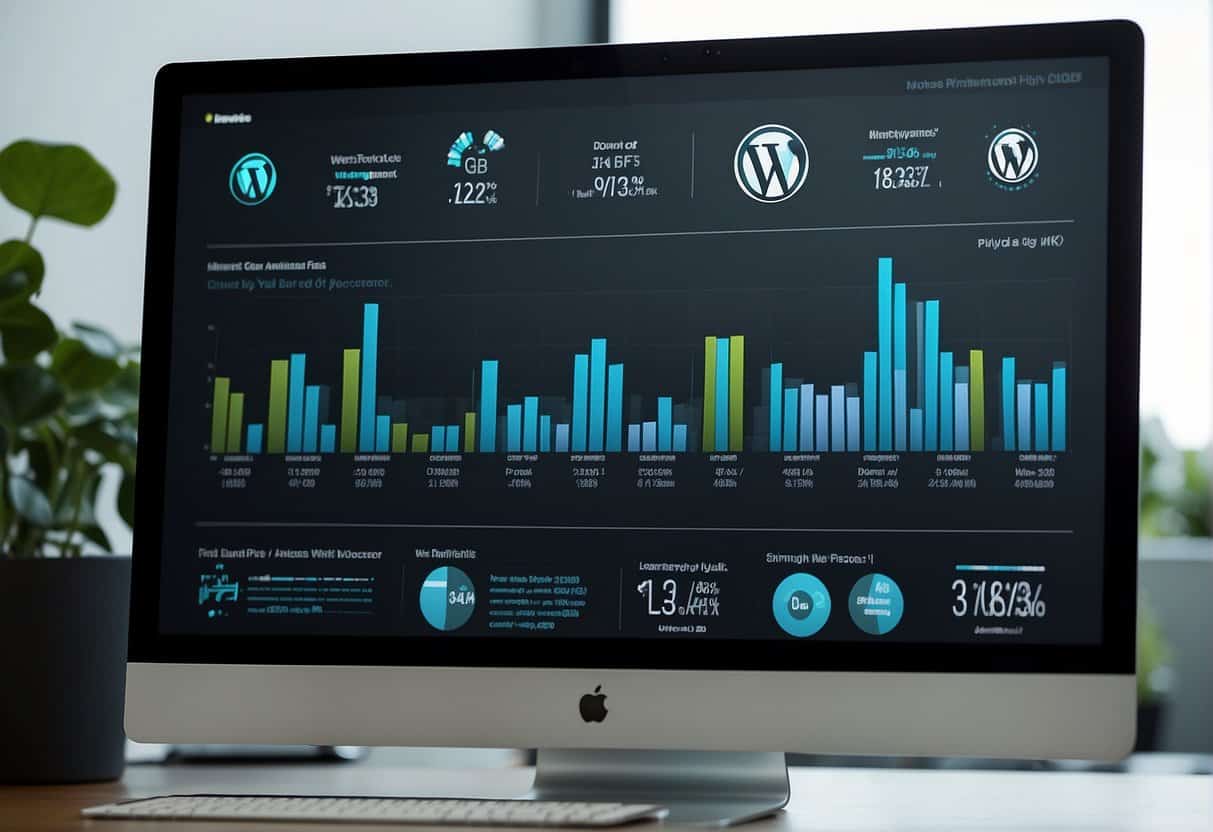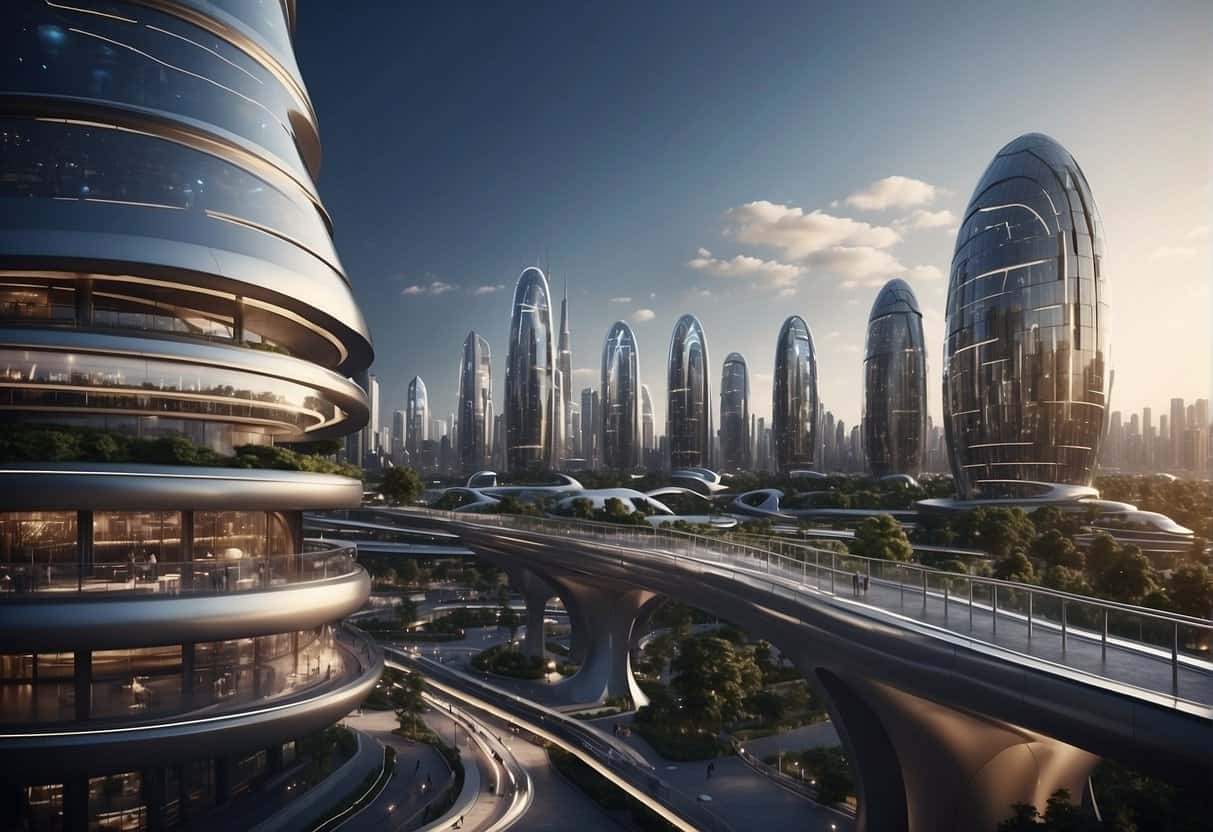Virtual summits are an excellent new service that you can offer your customers. They’re perfect for teaching people about the latest marketing trends, and they’re a great way to show off your expertise in an engaging environment. But what if someone isn’t convinced? Continue reading to find out how you can answer their objections and why summits as a service can be highly profitable.
Summits as a service? What does that even mean?
By offering summits as a service, you help your customers run their virtual events. You’re handling the website and all other tech components, while your customer’s only job is to record the summit sessions – and even with that, you can help them.
How do you know if a virtual summit can help your customers grow their business? Think about the following aspects that are typical results for virtual summit hosts:
- You add thousands of new, targeted leads to your email list.
- You build income streams through ticket sales, backend offers, and sponsorship.
- You establish thought leadership in the market and become the go-to person or company.
- You build up goodwill by giving summit access for free while it’s live – while also building a digital product (the summit session recordings and bonuses) you can leverage for years.
If your customer profile matches any of these four benefits, they’re a good fit for pitching a virtual summit. I’ve recorded an entire podcast episode about how virtual summits grow businesses online. Click here to give it a listen.
Say, for example, a summit could add 2,500 targeted leads to your customer’s email list. Assuming they close just 1% of those leads for their high-ticket offer, they got 25 new clients at their highest tier. That is revenue that comes on top of summit ticket sales, which are often in the four- and five-figures even for first-time summit hosts. And it is on top of sponsorship money, which your customers can leverage to pay for your services.
In short, you should consider selling summits as a service if your customers would benefit from:
- having a bigger email list,
- creating a digital product they can sell for the next 12 to 24 months while getting influencers involved, or
- becoming known as a thought leader in their space.
What if your customers don’t understand how summits work?
You’re probably wondering how you should sell your customers on the benefits a virtual summit could bring for them. They likely haven’t yet heard about online events and summits. Nor did they consider themselves as summit hosts, or do they see themselves doing interviews online.
Here’s the thing. It’s pretty easy to understand why summits are such a great opportunity once you stop talking about the tech.
Your customers might be saying things like:
- I don’t know how to use the tech required to do interviews online.
- The costs of organizing a summit are too high.
- I’m not good at public speaking or doing online interviews.
- I don’t know anybody who could potentially speak at this event.
- I’m a business owner; I’m not some fancy YouTuber or somebody who does interviews.
Let’s break these points down one by one.
You can easily explain to your customers how to use a tool like Streamyard to record the interviews for the summit. Tools like this become easier to use by the day, and all your customer needs is a somewhat decent recording setup – which you can build for them or guide them through the building process. You can incorporate all of this into your service.
The costs of organizing a summit are too high? Think again! A virtual summit is one of the best cost-effective marketing tactics on the market today. You get influencers that have tens of thousands of fans to promote your event free of charge. They even introduce your customer’s brand to their audience, which brings an immediate boost in trust and authority.
Your customer can onboard sponsors to cope with the cost before a single All-Access Pass has been sold. Additionally, your customer can monetize a virtual summit for years to come, e.g., by relaunching it every quarter, launching their services on the back of the summit, or doing affiliate marketing and JV promotions to their new audience.
If your customer says they don’t know anybody who could potentially speak at their summit, ask them to think again. They can invite companies they collaborate with, find influencers on social media, invite software companies they use, and use other resources to identify the right speakers. In your process, you can guide them through this research phase.
The biggest objection might be that they don’t want to devote the time to do the interviews for the summit. They overcomplicate the recording in their minds and forget that your team will be handling most of the work. Your team can even help your customers schedule the interviews, so they just have to jump in front of the camera and press Record.
You have to explain to them that those interviews are not just one-time events. They’re building relationships with those speakers at their event. These relationships can last to countless benefits and positive ripple effects in the future.
How do you execute a summit that gets results?
Ok, I’ll admit that I didn’t yet address the elephant in the room – the delivery of your virtual summits as a service. You need to have a repeatable process in place that ensures your summit delivers results for your customers.
Let me share the significant milestones of the Virtual Summit Mastery framework with you. It’s a proven method to host virtual summits and accounts for millions of targeted leads and millions of dollars in revenue generated collectively from the VSM students.
The 7-steps of hosting a virtual summit that exponentially grows the email list, audience, and revenue of your customers are:
Step 1: Building a solid foundation
At the very beginning should be the planning and strategy for the virtual summit. You’re defining a profitable summit theme and choosing the market in which you want to run the summit. This includes researching the competition, products, and services already being sold or virtual summits already running. Niche down until it hurts.
The summit will be well planned and organized from start to finish with your input on what is needed for success, what target audience you have, and what market you want to become the expert in and help others reach their goals.
Define your attendee avatar and truly narrow down on their pain points, wishes, and beliefs. Ideally, your customer already has this information from the products or services they already sell.
After narrowing down your niche and audience, you need to find a good “hook” for your summit. The hook is the one reason why somebody will attend the event.
Some of the reasons people attend online events are finding information, gaining knowledge, or network with others in a similar field of interest. Another reason is to build up their CV and mention that they attended the event, which could help show their expertise in their field. And thirdly, attending online events is much easier than participating in in-person conferences because there’s no travel or accommodation cost involved.
Step 2: Identifying and onboarding the right influencers
As an agency, you can help your customers identify and build relationships with thought leaders and influencers in their space.
You can do some research on social media to find influencers for your customer’s summit. Influencers are people who have a large following or group of followers in the niche you’re to run the summit in. Don’t obsess too much with the number of followers, though.
Somebody with 10,000 engaged followers can be a more potent contributor to your summit than a best-selling author with millions of followers who don’t react to the influencer’s messages.
You can also reach out personally to influencers via email and say you want to offer them an opportunity to be part of something special because they may have a large following.
You might say that you know they would want to share this opportunity with their followers, and you would like them to join as a speaker or moderator. Make sure you give them time to respond before moving forward with the summit without them.
Also, when reaching out, ensure that you’re offering a Win-Win situation. Ideally, you can offer the speaker more than just exposure. Let them promote their current launch or services, set yourself up as an affiliate and give them publicity before you even ask, and find other creative ways to add value before making the ask.
The other way is to create relationships with influencers your customer is already in touch with. These could be corporate partners, suppliers, consultants, or the people running the software used by your customer.
When selecting your speakers, you need to have the right mix of people. You might want a few rockstars and top-rated speakers to get much attention for your event. You should also try to have some well-known experts and get more people to come, but you need to give chances for up-and-coming experts, too. These up-and-comers will promote the event the most because they get to share the stage with more famous thought leaders.
By following this process, your customer can identify and build relationships with thought leaders and influencers in their space.
During the onboarding process, you’ll want to set the schedule for their summit session recording and answer all the questions the speakers might have. Explain your promotional plan to them and tell them which dates they should promote your virtual summit. Giving them swipe copy and social media graphics will make the promotion a lot easier for them and more successful for your customer.
You are helping your customer to have the right people speak at the virtual summit so that the event can be promoted heavily.
In the end, you’re giving your customer’s business an edge over its competitors by offering this service and by helping them run a wildly successful virtual event.
Step 3: Building up the summit funnel
By now, you’ve got the strategy in place, and you’ve got a list of influencers who want to speak at the virtual summit – that’s great.
It’s about time to build the virtual summit funnel. You can use WordPress for this; I’ve personally hosted countless virtual events on WordPress.
Here is a list of tools that you need to run a summit:
- A content management system like WordPress to build the summit website
- Another CMS to host the membership area for All-Access Pass holders
- An email service provider like ActiveCampaign or ConvertKit to promote the summit and deliver the summit via email
- A tool like Deadline Funnel to create real urgency during the event
- A payment gateway to take payments for the summit All-Access Pass
- A platform to handle affiliates and promotional partners
The screenshot above shows you all the pages your funnel needs to have on the front end. It’s not that complicated once you break it down step by step. You’ll need to build the following pages:
- Registration page to collect opt-ins
- The sales page for the All-Access Pass
- Sales pages for upsells or downsells (optional)
- Checkout page to make the payment
- The confirmation page / Thank You page after payments have been completed
- Schedule page for your attendees to see an overview about who’s speaking at the summit
- Pages for each speaker where attendees can watch the sessions
- Networking pages (e.g., virtual roundtables or standing video calls)
- FAQ pages (optional but helpful)
- Legally required pages like imprint or cookie policy
To get inspiration for how these pages should be constructed, I recommend Virtual Summit Mastery. We have proven templates that generated millions of attendees over the past few years and that other companies are selling for thousands of dollars on their own. Inside VSM, you can get the templates as part of the entire course.
You can also check out other summits in the space and see how they’re structuring their summit pages. That’ll give you layouts you can work with, but you’ll have no idea if and how well they perform.
Step 4: Conducting great summit sessions
The most significant advantage of being a summit host lies in the relationships you’re building with the guest speakers and being present in every single summit session – so that attendees associate the summit host with the authority of the speakers interviewed.
That’s why you should not take on the interviews on behalf of your customer and instead help them conduct great summit sessions. Most often, your customers will be a bit hesitant in this step, but it’s your job to make them understand the potential and help them push through their comfort zone.
If you want to be a good interviewer:
- Make sure that you know the interview topic well
- Have a few interesting and insightful questions prepared
- Ensure that you’re asking questions that elicit valuable information from the interviewee
Some things to think about when preparing for your next podcast or Youtube interview are what type of person will be listening to it? What’s their main takeaway going to be? What are they most excited about learning, and how can they achieve the transformation they’re striving for?
Help your customers get into the mindset outlined above and make them understand that not being a professional interviewer will increase their likeability in the attendees’ eyes. Humans connect with humans, and if your customer is being honest about not having a routine in interviewing, they’ll immediately resonate better with the attendees. The attendees watching the summit sessions will think that your customer is “just like them” and thus connect with your customer on a deeper level.
The most significant advantage of being a summit host is the relationships you’re building with your guests. Your job as an event organizer will be to help them conduct great summit sessions so that attendees associate the summit host with the authority of speakers interviewed.
Some things for your customer to think about when preparing for the next summit interview are what type of person will be listening to it? What’s their main takeaway going to be? What are they most excited about learning, and how can they achieve the transformation they’re striving for?
Step 5: Setting up the summit delivery processes
Let’s go over how you will deliver the summit contents to the attendees – this is a process that you can handle without getting your customer involved. You’ll save your customer much time in this phase.
As the primary goal of running a virtual summit is to build an active email list, you will focus the delivery process of your summit on email marketing (and potentially messenger bots). You won’t promote links to the summit sessions anywhere but in emails to the attendees who signed up for your summit.
It’s highly recommended to set up automated email sequences for each day of the virtual summit. Each email should include links to the pages on the summit website where you’ve embedded the summit sessions. You’ll also want to link to the Schedule page (overview of all sessions with day and time of going live), and you’ll want to pitch the All-Access Pass offer to those attendees who haven’t bought it yet.
Your job with this delivery process is to make it as easy as possible for attendees to access the summit contents. Remember, you’ve fired them up for weeks about the summit during the prelaunch promotion. You’ve stacked expectations sky-high.
If people expect you to live up to their expectations, then it’s your responsibility to do so. If you don’t live up to their expectations, they’re going to be less likely to trust you in the future: either with something big or small. It’s also crucial because if people come expecting one thing and get another, they will not be happy.
Step 6: Launching your virtual summit with a bang
This step is one of the most critical and pivotal parts of any digital marketing campaign. It can be tricky to find that perfect balance between announcing your virtual summit loud and clear but without spamming people’s social media feeds or email inboxes – this is especially true when you’re launching a virtual summit.
In this phase, you need to ensure that all the promotional campaigns are ready to run. This includes:
- Paid traffic campaigns
- Speakers sharing the event
- Affiliates sharing the event
- Backlinks from podcast interviews or guest blogs being in place
- Media partners being ready to share the event
- Sponsors sharing the event
Much work goes into launching a virtual summit, but in the end, it’s like any launch of a digital product but with one massive advantage: You have thought leaders and influencers promoting your customer’s event to their audiences because they’re involved in the summit.
When you’re launching a new course or product, usually it’s just you and an army of affiliates who spread the word about your new offer. Summits are a different beast in this regard. You have well-trusted experts sharing the word about the event. This helps your customer gain immediate authority in front of their audiences by being the summit host.
Now is the time your customer will see themselves being talked about everywhere in their field. Suppose you’ve done an excellent job leading up to the summit. In that case, your customer will now be featured in industry-specific magazines, influencers will talk about the event, and social media will be full of people sharing the summit.
On summit launch day, you’re kicking off the email sequences from step 5 to deliver the summit to the attendees. The summit is in full swing, and you’ll likely be getting some requests from attendees not being able to access content or having questions about navigating the website. Don’t worry about those requests – you’ll learn a lot during this step and can improve your Summit-as-a-Service offering.
Step 7: Executing post-summit growth strategies
After wrapping up your summit, you can work out strategies with your customer to keep their business growing from the virtual summit. Here is where the true magic of selling summits as a service comes into play. Let me give you three examples of how you and your customer can generate revenue from a summit even after it ended:
Option 1: Email marketing
You can offer them an email marketing retainer. Help your customer keep in touch and deepen their relationships with the summit attendees. Nurture them and convert them from engaged leads into customers, increasing your customer’s business revenue.
Option 2: Relaunching the virtual summit
One of the easiest ways to continue leveraging a virtual summit is by relaunching the event after a couple of months. You’ve got all processes and workflows in place to execute the summit again and got all the contents done, too.
If your customer wants to, you can ask them to record a couple of new summit sessions to keep the contents fresh – but that’s not mandatory.
I’ve seen summit hosts relaunch their summits every quarter. That’s 4-times a year. All you have to do is update the dates in your emails and on the website – and double-check that all the automated processes still work.
Option 3: Turning the summit evergreen
Lastly, let’s briefly go over the concept of evergreen virtual summits. Like evergreen webinars, where people can automatically sign up for and receive the webinar automatically, you can turn entire summits evergreen. Tools like Deadline Funnels (and the training we have in VSM) make this process very straightforward.
Evergreen virtual summits are constant lead and revenue generation machines for your customer. You can charge a retainer for keeping the evergreen summit running. For you, this is an excellent concept because there’s little to no maintenance involved.
Your focus will be on driving traffic to the summit website. Paid traffic and SEO are fantastic for this purpose.
Conclusion
A Virtual Summit can indeed be a complex undertaking. That’s why Summits As A Service packages usually cost north of $15k.
However, if your customers are struggling to find new clients or would like the chance to become known as thought leaders in their industry, this could be the perfect opportunity for them. It may also help with customer retention and engagement by giving them access to cutting-edge marketing tactics they might not otherwise have had at their disposal.
If you want to dive deeper into the execution of virtual summits, ping me on Facebook, and I’ll send you my Summit Cheat Sheet. You’ll learn the exact process that helped VSM students run six-figure events for their customers.







